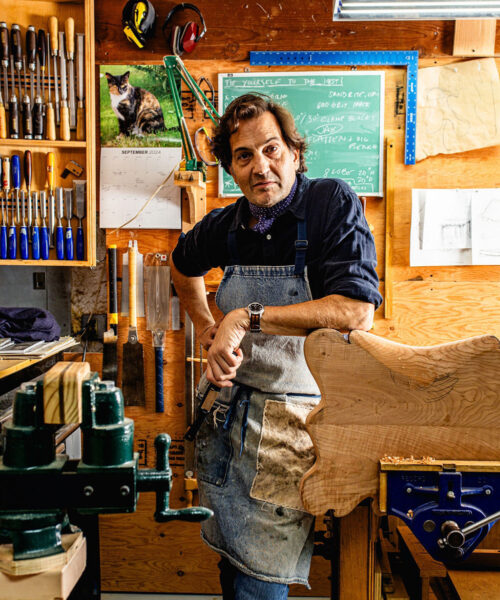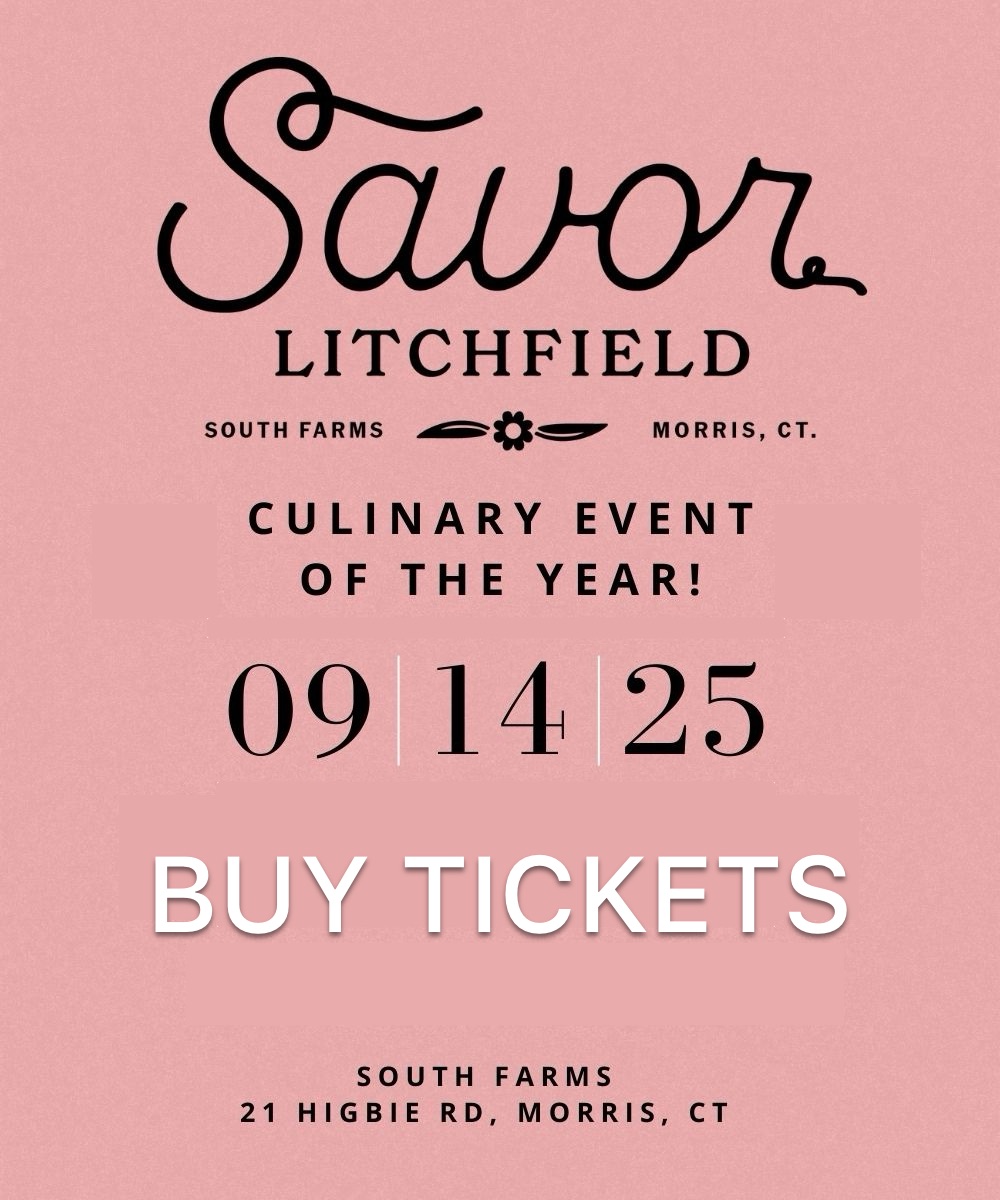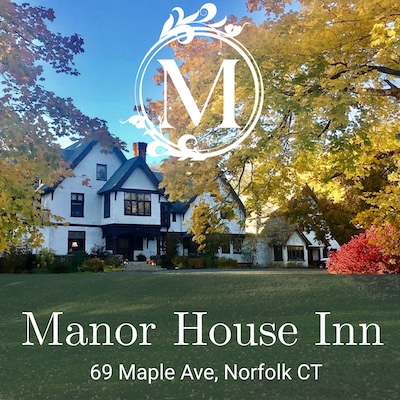November 1, 2024
Locke Bell: Combining Old-World Skills with a Fresh Eye
By Tara Kelly
Photographs by Lisa Nichols
In a world where so much furniture is machine-made, sold in Big Box stores, and put together with nothing more than an Allen wrench, it’s refreshing to visit the studio of furniture designer and maker Locke Bell.
His workshop is a simple one-room structure perched on a hill overlooking a small lake in Sharon. The walls are lined with tools: chisels, marking gauges, compasses, squares, backsaws, hammers, scrapers, planes. These are Bell’s tools of the trade. There are rows of jars of raw pigment, shellac, wax. Bell makes his own finishes. It’s a step back in time to when expert craftsmanship could create fine art.
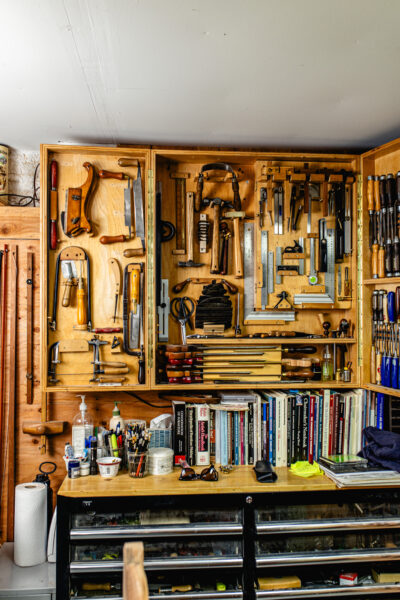
“I’m kind of a sucker for mahogany,” he says. He acknowledges that brown furniture has become unfashionable in some circles, but he sees it differently. “It’s lovely to work with, and can be very sustainable.” Bell is also partial to European walnut. He’s passionate about wood in general. “It’s not inert. Every stick is different. It expands and contracts. If you don’t understand it, it won’t last, and it’s not very forgiving.”
Bell is eminently quotable. “There is ‘standard’ good taste. It might tick all the boxes, but it’s boring, and I wouldn’t want it in my house. I’m interested in the more eccentric 18th-century forms and folk art.
“Everything I do is rooted in traditional furniture styles,” he adds.
Perhaps that’s because Bell got his start as a furniture conservator and restorer, working mostly for dealers and private clients. Furniture restoration is its own art form. “You want it to look its age, but look like it’s been really well cared for,” he says. Eighteenth-century English furniture was his specialty. “It’s what I trained on.” He still finds it to be graceful and elegant.
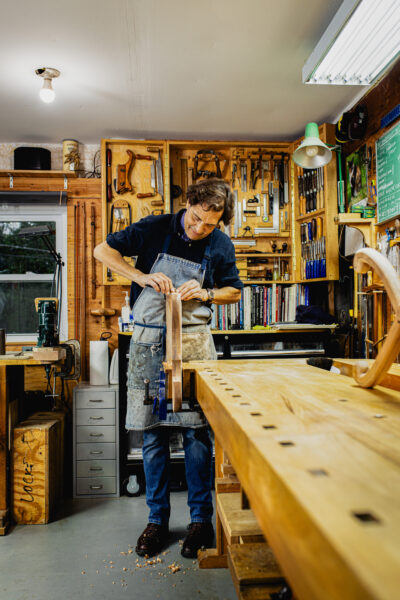
He has also always made furniture. “It’s part of restoration. When you take apart furniture and put it back together, you really begin to understand what quality is and what really works. Clients would come to me and ask me to make a sixth chair, to fill out a set of five. Sometimes I buy breakers [an unrestorable piece of furniture] of a certain era, to use the screws and pieces of the wood.”
In 2017, he went to work for Hostler Burrows (which has galleries in New York City and Los Angeles) as their full-time restorer—after several years managing the restoration department for R & Company.
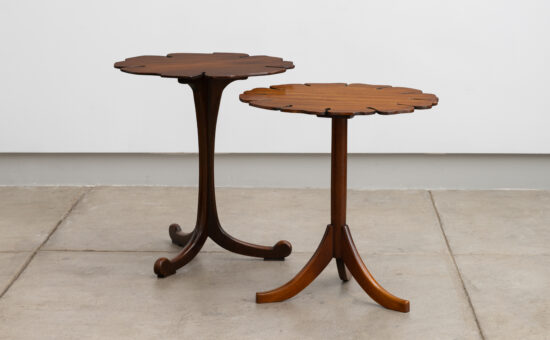
“Then, during the pandemic, I was in the studio making chairs and mirrors—which have a high visual impact, and allowed me to create my own design vocabulary.”
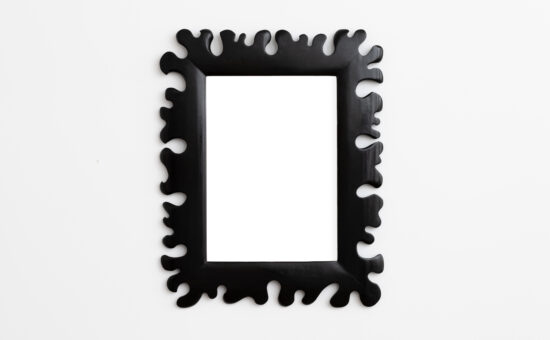
Because Bell makes each piece entirely by hand, each one is a little bit different. “I don’t measure that much,” he says. “I rely on my eye.”
True to his roots as a restorer he spends a considerable amount of time on the finish. “I French polish everything by hand, and then wax.”
There’s no doubt these pieces will stand the test of time.
Bell sells his furniture exclusively through Hostler Burrows. —hostlerburrows.com/artists-designers/locke-bell





